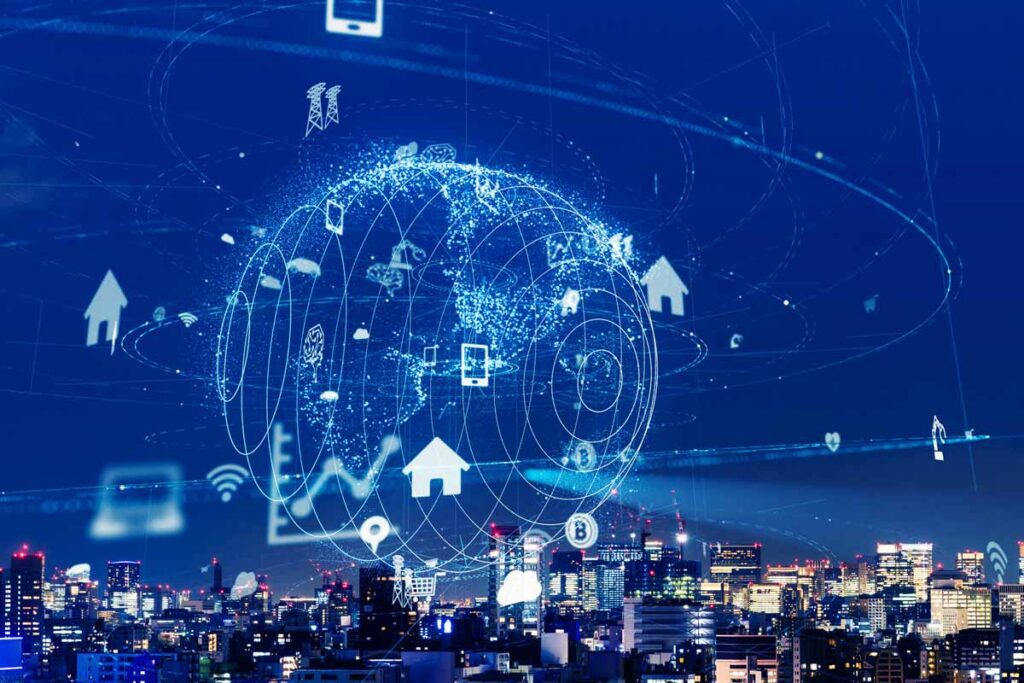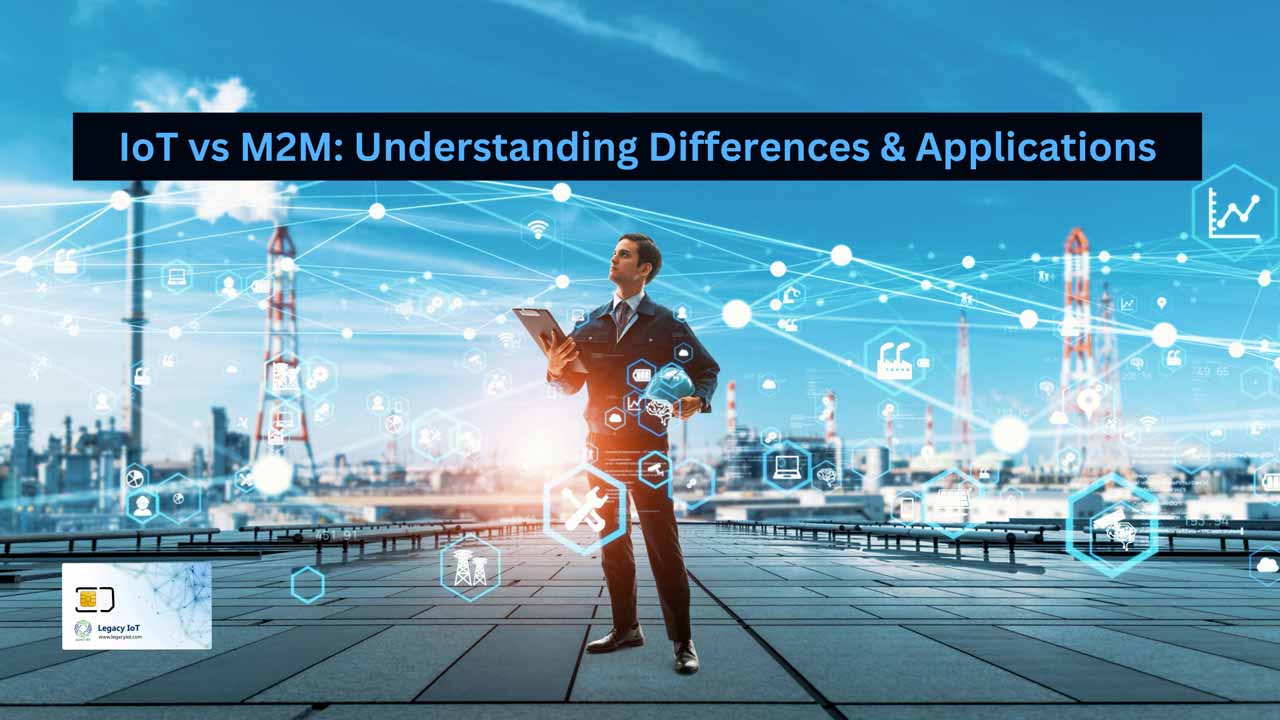Machine to Machine (M2M) communication and the Internet of Things (IoT) are two concepts that are becoming more and more popular in today’s highly interconnected society.

How are they different, and what do they actually mean? In-depth discussions of the definitions, parts, uses, and other details of IoT and M2M will be covered in this article.
Understanding IoT
Definition Of IoT
An object can communicate and exchange data with another object through the Internet of Things (IoT), which is a network of networked devices that does not require human intervention. These gadgets gather and send data to enable different applications and services since they are fitted with sensors and actuators.
Want to know about the Internet of Things in detail?
Components Of IoT
A central platform for data processing and analysis is one of the components of the Internet of Things, along with sensors, actuators, and connectivity modules. Together, these elements allow devices to engage and communicate with one other effortlessly.
Understanding M2M
Definition Of M2M
However, machine-to-machine (M2M) communication occurs directly between devices without the need for human interaction. Machines can communicate with one another and carry out tasks using pre-established rules and algorithms thanks to it.
Components Of M2M
M2M is made up of sensors, communication modules, and control units, just as IoT. M2M, as opposed to IoT, is concentrated on the sharing of data between devices for particular needs, like control and monitoring.
Key Differences Between IoT And M2M
Conceptual Differences
M2M and IoT differ primarily in their goals and areas of application. Machine-to-machine (M2M) communication is primarily concentrated on specialized activities, but Internet of Things (IoT) covers a wider range of use cases and services that need human contact.
Technology And Architecture
In order to enable scalability and flexibility, IoT often uses a cloud-based architecture for data processing and storing. However, because of its particular use cases, M2M frequently depends on infrastructure and communication protocols that are more tailored to a given area.
Applications And Use Cases
IoT finds applications in various industries, including smart homes, healthcare, transportation, and agriculture. M2M, on the other hand, is commonly used in sectors such as manufacturing, Vehicle Tracking and Logistics, energy, and utilities.
Pros And Cons Of IoT
Advantages Of IoT
– Enhanced connectivity and interoperability
– Improved efficiency and productivity
– Enablement of innovative services and business models
Challenges And Limitations Of IoT
– Security and privacy concerns
– Complexity of integration and management
– Dependence on reliable internet connectivity
Pros And Cons Of M2M
Advantages Of M2M
– Real-time monitoring and control through M2M Sim card
– Increased automation and efficiency
– Cost-effectiveness in specific applications
Challenges And Limitations Of M2M
– Limited scalability and flexibility
– Compatibility issues with legacy systems
– Lack of standardized protocols and interfaces
Future Trends And Development
Future developments in technology should bring M2M and IoT technologies closer together and further into one another. Technology breakthroughs in fields like edge computing, 5G connectivity, and artificial intelligence will spur innovation and open up new avenues for Internet of Things and machine-to-machine applications.
Conclusion
In summary, IoT and M2M are similar in that they allow devices to communicate with one other, but they have diverse uses and unique features. Legacy IoT imperative for firms and organizations to comprehend the fundamental distinctions between M2M and IoT in order to efficiently utilize these technologies.
FAQs
1. What is the main difference between IoT and M2M?
IoT involves interconnected devices with human interaction, while M2M focuses on direct communication between machines.
2. How do IoT and M2M impact different industries?
IoT and M2M have diverse applications across industries, ranging from smart homes and healthcare to manufacturing and logistics.
3. Can IoT and M2M technologies be used together?
Yes, IoT and M2M technologies can complement each other, offering enhanced connectivity and automation in various applications.
4. What are some security concerns related to IoT and M2M?
Security concerns include data privacy, unauthorized access, and vulnerabilities in connected devices and networks.
5. How can businesses leverage IoT and M2M for Business growth?
By implementing IoT and M2M solutions, businesses can improve efficiency, optimize operations, and create innovative products and services.





